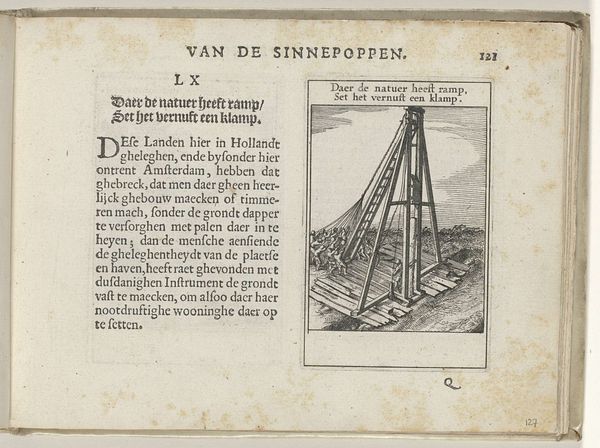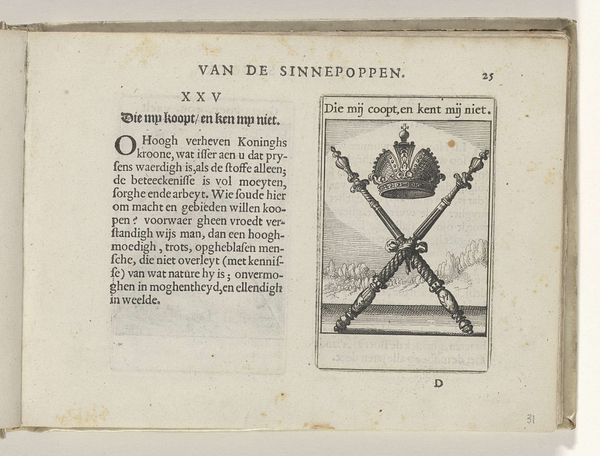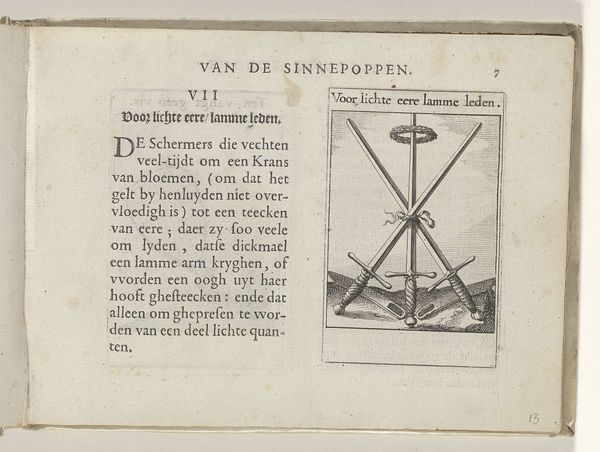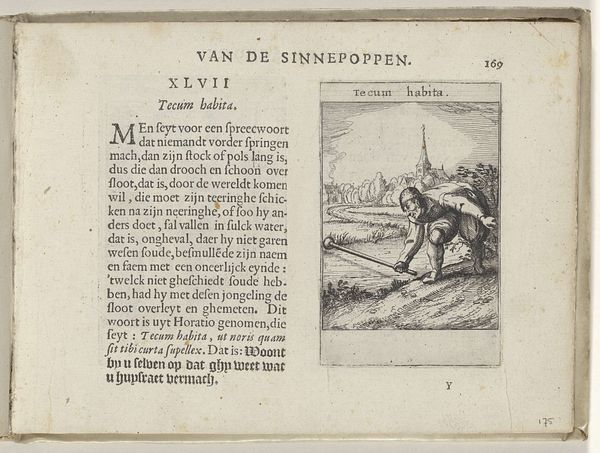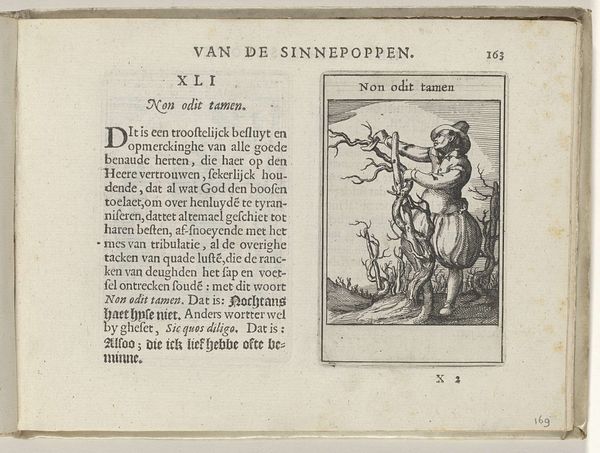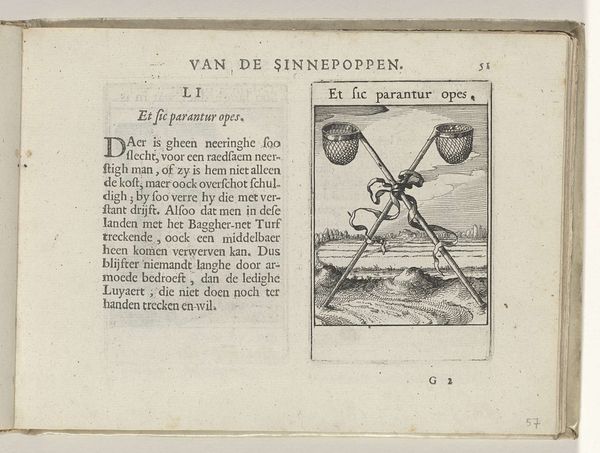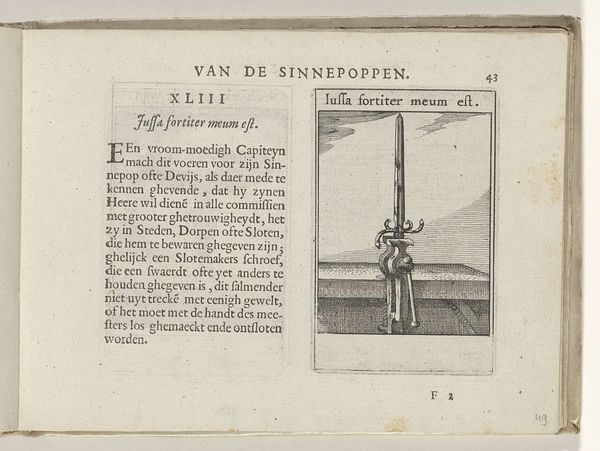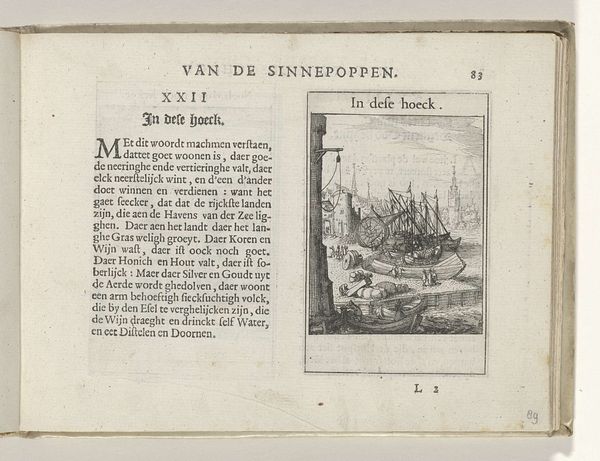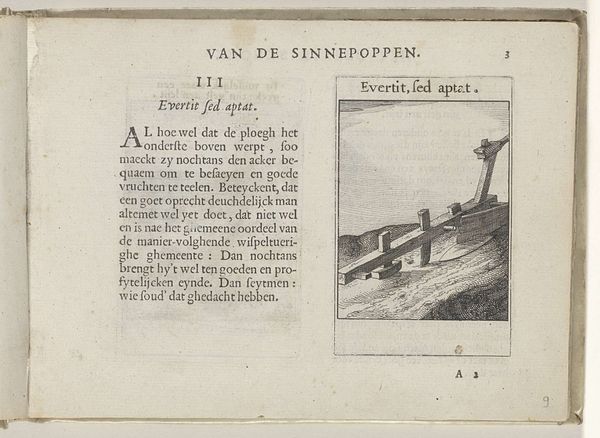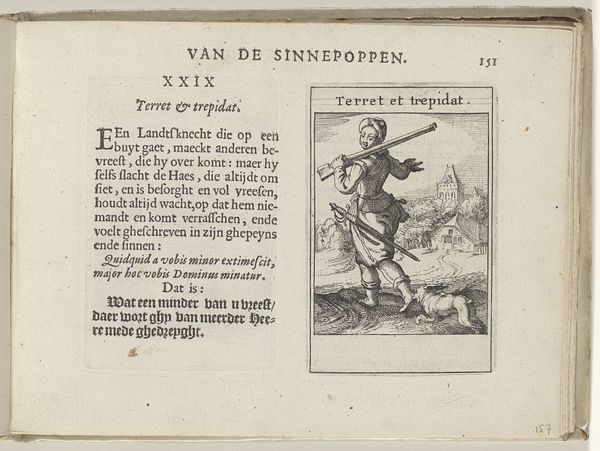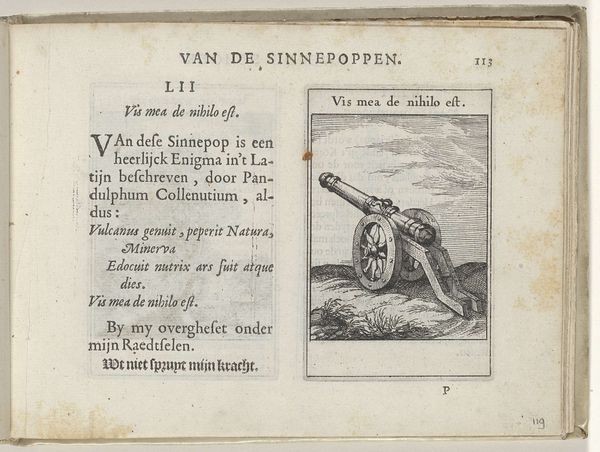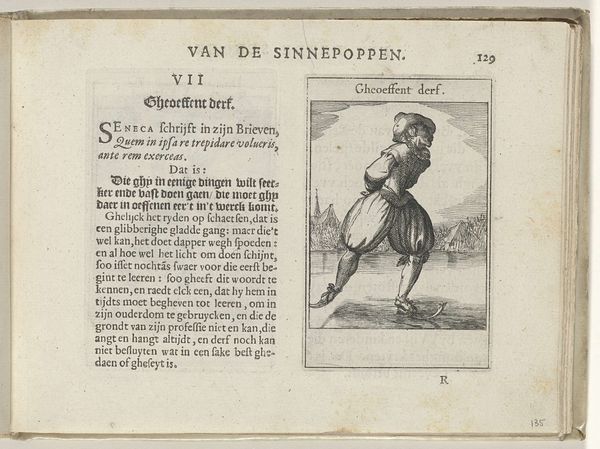
graphic-art, print, engraving
#
graphic-art
#
medieval
# print
#
11_renaissance
#
northern-renaissance
#
engraving
Dimensions: height 137 mm, width 188 mm, height 95 mm, width 60 mm
Copyright: Rijks Museum: Open Domain
Curator: So, we have before us "XVII Diese minst behoeft, isser best aen," an engraving by Roemer Visscher from 1614, housed at the Rijksmuseum. Editor: Yes, that's right. The engraving depicts what seems to be a peculiar assembly of objects tied together. I’m immediately struck by how strange the objects seem, a mix of the mundane and the somewhat… unsettling? What should we make of all of this? Curator: The strangeness, as you call it, is precisely the point. Think of the symbolism at play here. Notice how the crutches intersect in an “X” shape; what emotions or associations might arise when seeing such an iconographic configuration? And what happens when considering the symbolism of the objects in terms of vanitas, the message of mortality, and fleeting worldly possessions? Editor: So, are you saying that everyday objects are given new significance here? A commentary on something perhaps? Curator: Indeed. Everyday objects are invested with cultural meaning, prompting reflection on our attachments. Consider the inscription too: "He who needs least, is best off." It’s about self-reliance. How does this written element impact the artwork's meaning for you? Editor: It feels a bit like a warning, or perhaps a lesson about not relying too much on external things or people for happiness or stability. It feels quite bleak. Curator: Bleak perhaps, but also quite wise. Remember the period and the rise of humanist ideas. These emblems were meant to teach moral lessons. The collection itself asks: How are the psychological dimensions of these figures related to their surroundings and era? Editor: I hadn’t considered that. Thinking about the historical context makes this image less bizarre and more of a… thought experiment. Curator: Exactly. It shows the continuity of certain human anxieties across time. Editor: Fascinating. I am starting to think about those issues with renewed attention, considering these objects aren’t simply random, but charged with historical and cultural meaning. Thank you for showing me the hidden depths in what I thought was simply a strange image.
Comments
No comments
Be the first to comment and join the conversation on the ultimate creative platform.
